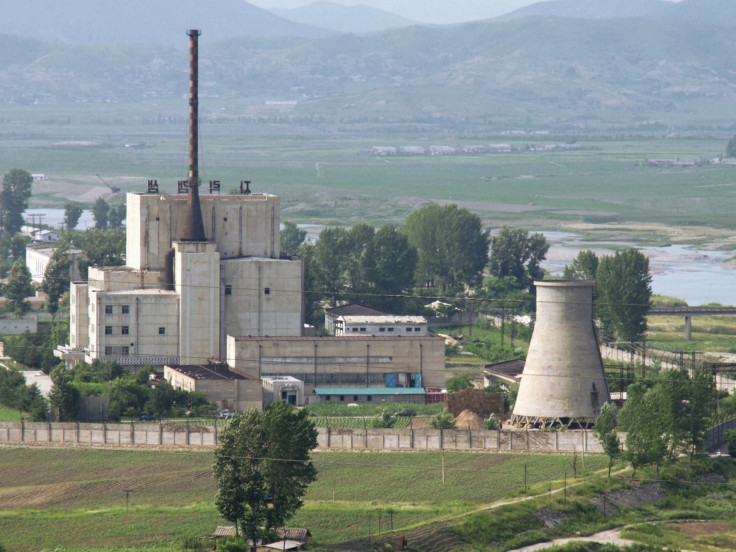North Korea Nuclear Facility Threatened By Floods, Satellite Images Reveal

KEY POINTS
- The flooding that struck North Korea last week is thought to have inflicted minimal damage on the Yongbyon Nuclear Scientific Research Center
- This plant is North Korea's only source of nuclear weapons-grade plutonium
- Kim Jong-un last May declared his intent to boost North Korea's nuclear deterrence capability
The devastating monsoon rains and widespread flooding wreaking havoc in North Korea appear to have spared a nuclear weapons facility, but satellite images show just how vulnerable the facility is to such weather events.
The Yongbyon Nuclear Scientific Research Center, which is thought to be operational once again, is North Korea's major nuclear facility. It produced all the fissile material for the country's six nuclear weapons tests.
It processes spent fuel from power stations and is the sole source of plutonium for North Korea's nuclear weapons program. It's located some 100 km north of Pyongyang in North Pyongan Province near the Kuryong River.
The six underground tests took place from 2006 to 2017. The largest test had a yield of 250 kilotons. This weapon was detonated in September 2017 at the Punggye-ri Test Site.
Yongbyon's main 5 MWe nuclear reactor seems to have been in mothballs since 2007 after North Korea temporarily ended its nuclear weapons testing program. On May 24, however, North Korean supreme leader Kim Jong-un announced “new policies for further increasing the nuclear war deterrence of the country and putting the strategic armed forces on high alert.”
On June 7, the International Atomic Energy Agency (IAEA) revealed North Korea appears to have restarted Yongbyon. It displayed satellite images indicating "activities related to the five-megawatt reactor, expansion of enrichment facilities and activities related to reprocessing."
The flooding that engulfed North Korea since early August might delay the ongoing restart of Yongbyon. Commercial satellite imagery released to the media Aug. 6 reveals heavy flooding caused by the nearby Koryong River overflowing its banks.
The flooding seems to have affected the facility's cooling systems. Damage might also have been caused to the pumps and power systems.
Damage to the pumps and piping within the pump houses are the biggest threat to the reactors. The inability to cool the nuclear reactors will require their shut down.
On the other hand, the 5 MWe reactor doesn't appear to have been hit by flooding. The still moribund Experimental Light Water Reactor (ELWR) remains untouched.
Images from Aug. 8 show the flood waters ebbing, suggesting the major facilities within Yongbyon such as the Uranium Enrichment Plant (UEP) were spared serious flood damage.
The images seem to suggest North Korean scientists will have no problems bring Yongbyon up to speed to meet Kim's demands for a stronger nuclear deterrent. This means producing more fissile for more nuclear bombs. Western experts believe Yongbyon can produce one bomb's worth of plutonium every year.
© Copyright IBTimes 2025. All rights reserved.





















